Armored Core is a third-person shooter mecha video game series developed by FromSoftware. The series centers on a silent protagonist who takes on work as a mercenary pilot in the far future, operating large robot combat units known as Armored Cores at the behest of corporate and private clients. As the player completes missions for these clients, they gain credits to improve their Armored Core and unlock further opportunities to make money. Some games include an "Arena" mode in which the player fights other Armored Core pilots in head-to-head battles, which can reward the player with further income or prestige.

The PlayStation Portable (PSP) is a handheld game console developed and marketed by Sony Interactive Entertainment. It was first released in Japan on December 12, 2004, in North America on March 24, 2005, and in PAL regions on September 1, 2005, and is the first handheld installment in the PlayStation line of consoles. As a seventh generation console, the PSP competed with the Nintendo DS.

Lumines: Puzzle Fusion is a 2004 puzzle game developed by Q Entertainment and published for the PlayStation Portable by Bandai in Japan and by Ubisoft elsewhere. The objective of the game is to arrange descending two-colored 2×2 blocks to create 2×2 squares of matching color. A vertical line known as the "time line" sweeps across the field, erases completed squares, and awards points. Each stage has a skin that affects the background, block colors, music, and the speed of the time line.
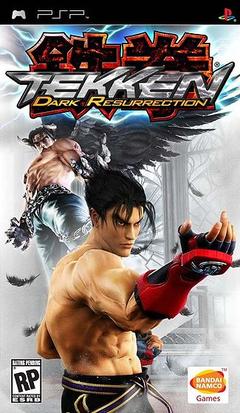
Tekken 5: Dark Resurrection is a fighting game and a standalone update to the PlayStation 2 game Tekken 5. The arcade version was released in Japan in December 2005 and later worldwide in February of 2006, while the PSP version was released as a home version of the Tekken series later that year in July 2006. The game was also released as a downloadable game on the PlayStation 3 via the PlayStation Network online service in Japan in 2006 and the rest of the world in 2007. A sequel, Tekken 6 was released in 2007.

Armored Core is a 1997 third-person shooter mecha video game developed by FromSoftware and published by Sony Computer Entertainment for the PlayStation. It was originally released in Japan by FromSoftware in July 1997 and in North America in October 1997 and Europe in 1998 by Sony Computer Entertainment. The game is the first entry in the Armored Core series. A digital port was released in 2007 in Japan and 2015 in North America on the PlayStation Network as a part of the PSone Classics line of games.

Armored Core: Project Phantasma is a 1997 third-person shooter mecha video game developed by FromSoftware for the PlayStation. Project Phantasma is the second entry in the Armored Core series and a prequel to the original Armored Core. The game was not released in Europe.
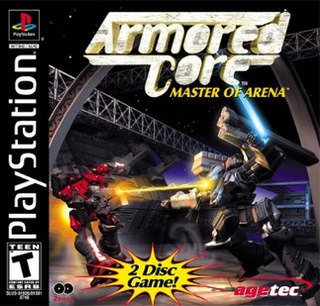
Armored Core: Master of Arena is a 1999 third-person shooter mecha video game developed by FromSoftware for the PlayStation. Master of Arena is the third entry in the Armored Core series and a direct sequel to Armored Core: Project Phantasma. It is the final game in the original Armored Core trilogy. The game was not released in Europe. An indirect sequel, Armored Core 2, was released on August 3, 2000, for the PlayStation 2.

Armored Core 2 is a 2000 third-person shooter mecha video game developed by FromSoftware for the PlayStation 2. It is the fourth entry in the Armored Core series and an indirect sequel to Armored Core: Master of Arena. In North America, Armored Core 2 was a launch title for the PlayStation 2. A direct sequel, Armored Core 2: Another Age, was released in 2001 for the PlayStation 2.
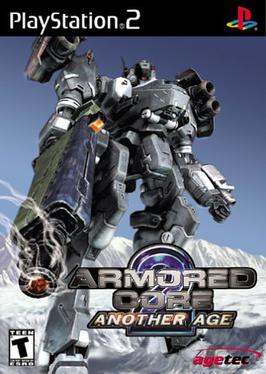
Armored Core 2: Another Age is a 2001 third-person shooter mecha video game developed by FromSoftware for the PlayStation 2. It is the fifth entry in the Armored Core series and a direct sequel to Armored Core 2. A reboot of the series, Armored Core 3, was released in 2002 for the PlayStation 2.

Silent Line: Armored Core, known in Japan as Armored Core 3: Silent Line, is a 2003 third-person shooter mecha video game developed by FromSoftware for the PlayStation 2. It is the seventh entry in the Armored Core series and a direct sequel to 2002's Armored Core 3. In 2009, Silent Line: Armored Core was ported to the PlayStation Portable.

Armored Core: Nexus is a 2004 third-person shooter mecha video game developed by FromSoftware for the PlayStation 2. It is the eighth entry in the Armored Core series and a sequel to 2003's Silent Line: Armored Core. Unlike Silent Line, Nexus is not an expansion but rather a full-fledged sequel.

Armored Core: Nine Breaker is a 2004 third-person shooter mecha video game developed by FromSoftware for the PlayStation 2. It is the ninth entry in the Armored Core series and a spin-off to Armored Core: Nexus.

Armored Core: Last Raven is a 2005 third-person shooter mecha video game developed by FromSoftware for the PlayStation 2. It is the eleventh entry in the Armored Core series and a direct sequel to 2004's Armored Core: Nexus. In 2010, Armored Core: Last Raven was ported to the PlayStation Portable.

Armored Core 4 is a 2006 vehicular combat game developed by FromSoftware. It is the 12th installment and 4th main installment in the mecha-based Armored Core series, the game serves as a reboot for the franchise. It was released for the PlayStation 3 and Xbox 360 in Japan in 2006 and worldwide the following year.

Grand Theft Auto: Vice City Stories is a 2006 action-adventure game developed by Rockstar Leeds and Rockstar North, and published by Rockstar Games. The tenth instalment in the Grand Theft Auto series, the game was initially released as a PlayStation Portable exclusive in October 2006. A PlayStation 2 port was released in March 2007. Set within the fictional Vice City in 1984, the game is a prequel to 2002's Grand Theft Auto: Vice City and follows the exploits of ex-soldier Victor "Vic" Vance, a minor character originally featured in said game. The story centres around Vic's attempts to build up a criminal empire alongside his brother Lance. With the initial intention of raising money for his sick brother Pete's medication, Vic comes into conflict with rival gangs, drug lords and other enemies.
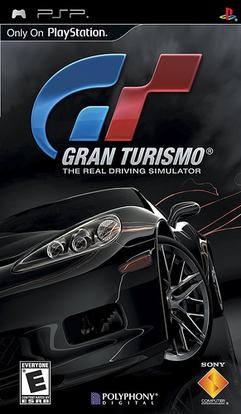
Gran Turismo is a 2009 racing video game developed by Polyphony Digital and published by Sony Computer Entertainment for the PlayStation Portable. The game was announced at Sony's E3 press conference on May 11, 2004, alongside the original PSP. Following five years of delays and speculation, during which it was variously known as Gran Turismo Portable, Gran Turismo 4 Mobile, Gran Turismo 5 Mobile and Gran Turismo 4.5, it made a reappearance at E3 on June 2, 2009, in playable form. It was released on October 1, 2009, as one of the launch titles for the new PSP Go. As of September 2017, Gran Turismo has sold 4.67 million units, making it one of the best-selling PSP games. On June 1, 2010, the game was re-released as part of Sony's Greatest Hits budget line of video games.
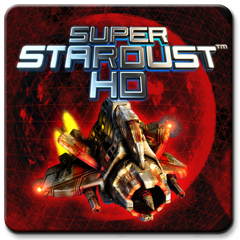
Super Stardust HD is a downloadable shoot 'em up video game that was released for the PlayStation 3 by Sony Interactive Entertainment, developed by the Finnish company Housemarque. In Asian regions, it is known as Star Strike HD. In 2015, a port for the PlayStation 4, called Super Stardust Ultra, was released. In 2016, Super Stardust Ultra VR, a PlayStation VR compatible version that contains Super Stardust Ultra, was released for the PlayStation 4. It is also available as paid downloadable content for Super Stardust Ultra.

N+ is the console and handheld version of the Adobe Flash game N, which was developed by Metanet Software. N+ for Xbox Live Arcade was developed by Slick Entertainment and published by Metanet Software. Unique versions of the game were also ported separately to the PlayStation Portable and Nintendo DS by developers SilverBirch Studios and Atari. Metanet Software licensed their N IP for this deal, provided single player level design for both versions, and consulted on the project.

LittleBigPlanet is a puzzle-platform game for the PlayStation Portable developed by SCE Cambridge Studio in conjunction with Media Molecule and published by Sony Computer Entertainment. An addition to the LittleBigPlanet franchise made for the PSP, featuring a brand new story mode. It was released on 17 November 2009 in North America and 20 November 2009 in PAL regions. The game's servers have been shut down since July 30, 2016.

Toy Story 3 is a 2010 platform game developed by Avalanche Software and published by Disney Interactive Studios. The game is based on the 2010 film of the same name. It was released for PlayStation 3, Xbox 360, Wii, and Microsoft Windows. The game was ported to OS X by TransGaming. A Nintendo DS version was developed by n-Space, while Disney Mobile Studios developed and published an iOS game based on the film. Another version was developed by Asobo Studio and released for PlayStation 2 and PlayStation Portable.


















